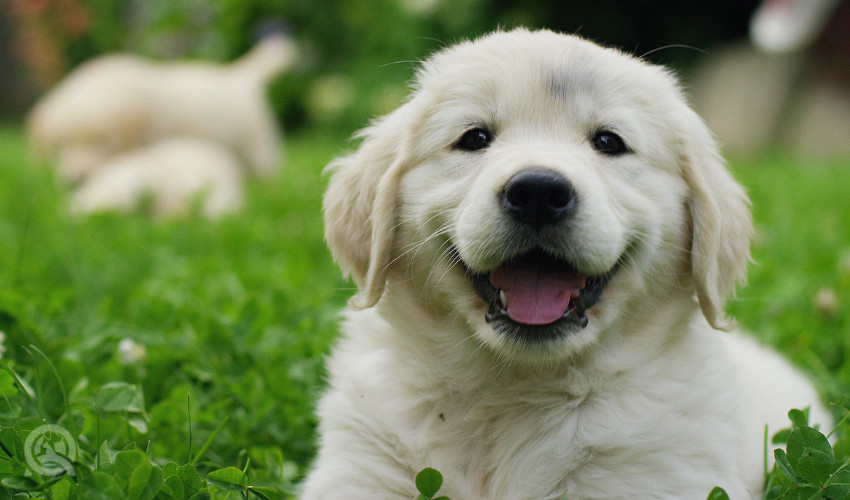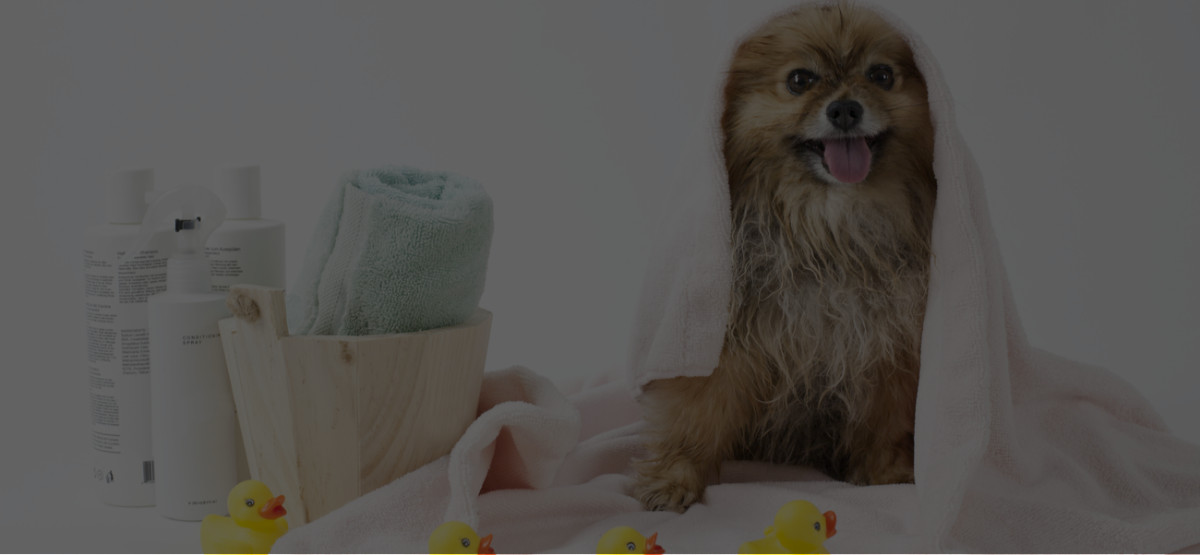Owning your very own dog for the first time is super exciting – but also a bit scary. A living, breathing being, entirely dependent on you for its survival? Talk about pressure!
You’ll quickly come to find that the limitless affection you’ll feel from your pup and receive in return far outweighs any difficulties by a long shot. So long as you protect, love, and cherish your dog like a member of the family, you’ll make an A+ caregiver.
Part of learning how to do that, of course, is knowing how to take care of your dog’s physical and mental health. Doing so will keep your dog healthy, but will allow the two of you to bond. So you’re going to need to learn how to groom him and, more importantly, to make a regular habit of it.
Now, because you’re brand new to this dog-owning thing, you may not know where to start. Don’t worry! Just make sure you have the following items, and you’ll be golden… retriever!

(Hah!)
Keep reading to learn about the 7 best dog grooming tools you’ll need as a first time pet owner!
1. Dog brush
Everyone and their grandma knows that dogs need to be brushed. Brushing helps to remove dead skin and hair, while also detangling any knots. Brushing also helps the body produce its natural oils. Since the bristles of the brush come into rhythmic contact with the skin, brushing also helps your dog’s overall blood flow. Simply put, brushing keeps him happy and healthy!
There’s a lot more to it than that, though. No matter what, you should always brush your dog at least weekly. But depending on the breed, you may need to brush him more, or less, frequently.
Breed will also affect the type of brush you’ll have to buy. A good all-purpose dog brush would be a slicker brush, but if you want to do the best job possible, you can use:
- Grooming gloves – Useful for quick, surface brushes if your dog is a major shedder.
- Combs – Fine-toothed combs work well on fine dog hair, whereas wide-toothed combs are for dogs with thick coats. Typically, medium-toothed combs are the standard choice.
- Pin brush – Best used on single coat dogs with long hair.
- Curry brush – Created for dogs with short hair.
- Undercoat Rake – Ideal for the double-coated dog who sheds twice a year. Furminator FTW!

2. Dog hair clippers and/or scissors
We wouldn’t expect someone who’s not a hairdresser to walk into a salon and start snipping away, so if you don’t feel comfortable with this grooming step, you can always turn to a professional dog groomer to trim your pooch’s hair.
If you do think you’re up for the task, you’re going to need some tools first. Clippers are the most common option. However some dogs, such as smooth-coated dogs, won’t need clipping. If he’s a breed with a wired coat, you can always hand-strip your dog as well. Normally this is done twice a year.
If you’re unsure what sort of clippers to use, you can always visit your local pet store and ask an expert. He or she can show you what’s in stock, and which clippers would be best for your dog.
Some northern breeds with thick fur, such as Huskies, or breeds with double coats, such as Golden Retrievers, should never be clipped. Clipping can permanently damage their coats. Check carefully to see if your pet’s fur should not be clipped.
Even if your dog doesn’t need regular trims, a good pair of scissors or a good quality trimmer comes in handy for removing mats/burs or for trimming the hair between the pads of the feet. Typically trimmers are safer for this type of work, but you can also use scissors if you have a calm pup and a steady hand!
3. Dog nail clippers & Styptic powder
Always use equipment designed for dogs. When it comes to nails, this is an absolute must.
If your dog has lots of energy energy and is full of zoomies, his nails might not need to be cut often. His activity will naturally wear the nails down. Less active and/or old dogs will need regular attention. Some examples of the different kinds of nail trimming tools are:
- Claw-like/plier-like clippers
- Scissor-like trimmers
- Guillotine trimmers
- Files
For puppies or dogs with small, delicate nails, we recommend the scissor-like trimmers.
Styptic powder is something every owner should have on-hand when trimming their dog’s nails. If you’re lucky, you’ll never need to use it! But if you’ve ever accidentally cut a quick without your trusty QuickStop handy, you’re well aware of the mess that can ensue.
Pro tip: Get your puppy used to regular nail trims from day one! Make a point to trim a few nails at least once per week, and use lots of treats! Your future self will thank you.

4. Dog shampoo and conditioner
You don’t need to be a professional with a specially-made dog bathtub to wash your dog. Your regular bathtub will be fine – just make sure you have a lot of old towels ready, because you’ll need them!
As with all dog grooming equipment, you must use shampoo and conditioner designed for dogs. If you use the wrong stuff, your dog could experience skin irritation and even hair breakage. You’ll find many shampoos and conditioners made just for dogs. These won’t sting if they get into your pet’s eyes. When buying shampoo and conditioner, always look for those that are free of scents and dyes.
Dogs with medical conditions might require special types of shampoo. So if your dog has highly sensitive skin, is prone to allergies, or has regular skin infections, it’s a good idea to consult with your veterinarian before choosing a shampoo.
5. Dog toothpaste and toothbrush
Did you know that only approximately 8% of dog owners brush their pup’s teeth every day? What’s a bit more terrifying is that a whopping 43% of owners have never brushed their dog’s teeth. Imagine if you never brushed your teeth, or even if you skipped more than a day. You’d feel gross! So why should your dog have to go through that?
Lack of brushing can lead to dental disease, gum decay, tooth loss, and a world of pain! When it comes to your dog, make sure his teeth are well taken care of. Brush them at least every 2-3 days, but if you can do it more frequently, so much the better.
Human toothpaste will upset your dog’s stomach, so once again, make sure the product is made specifically for canines. You’ll be able to pick from countless options when it comes to flavor, organic options, etc. You’ll also be able to see which ones are vet-approved.
Doggy toothbrushes have angled bristles and are soft to the touch. Depending on your dog’s breed, he may benefit from a certain type of toothbrush. You may have to choose a brush that suits your dog’s needs. For instance, big dogs often need brushes with long handles, since you have to be able to go further into their mouths. On small breeds, though, you can use a finger brush.

6. Ear cleaning supplies
Another important but neglected part of dog grooming is regularly cleaning your dog’s ears. This is especially important in dogs with big/floppy ears! Remember: he can’t reach up and do it himself, and stuff will start building up in there. If it’s not properly remedied with regular grooming, he can suffer from ear infections thanks to wax, debris, humidity, etc.
Ear cleaning can be done by anyone. You must, however, be sure you are as gentle and careful as possible. Plenty of ear cleansers that vet-recommended and can be purchased in pet stores. These will rinse and clean out your dog’s ear canal. Once the gross stuff inside the ear is flushed out, you can use something soft and sanitary (like a cotton pad) to wipe it away. Don’t poke anything sharp into your pet’s ear!
If you want the job done as thoroughly as possible (e.g. using ear powder, plucking excess hair, etc.), then we strongly recommend either taking your dog to a professional. Alternately, another option would be to have formal training under your belt by taking a dog grooming course!
7. TREATS!
Come on – you couldn’t possibly think that we’d talk about the well-being of your pup without mentioning that you should spoil him with treats? Of course we’re going to say that!
While too much of a good thing can have its own negative consequences (e.g. chonky doggos), yummy treats are great tools for learning, rewarding good behavior, and just reminding your furry friend that he is, in fact, your best friend. You can buy treats at grocery stores, pet shops, bakeries, and even make your own!
Plus, treats can come in handy if you ever need to distract your dog long enough to get something done. Case in point: if your dog hates baths and refuses to sit still in the tub, put a little bit of peanut butter on the bathtub wall. Bam! Your dog will quite literally forget you exist, and you can finally scrub out all that dirt he rolled around in while digging up the neighbor’s garden.

Congrats again on becoming a new dog parent! We wish you and your new furever friend the happiest life together! Now that you know about the top seven grooming tools you’ll need, we have no doubt your dog will be well taken care of for years to come.
If you’re ever unsure, always remember that you can take him to a professional.
Or better yet, if you have the interest and the drive, that professional could very well be you! A good pet grooming school will allow you to become trained and certified on your own schedule and at affordable prices. You’ll also receive the equipment needed to complete the course and to launch your career. You could find yourself ready to start your dream job in less than a year!
Can you think of a better career than one where you’re around animals all day!
